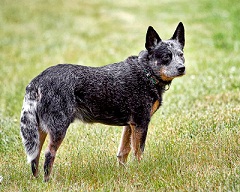
These dogs often help people cope with emotional issues, offer physical contact, invoke pleasant memories and help to divert a person's focus from the problems of day to day life. That's why they've been used with great success as helpers for those friends or family members who are in therapy. These dogs are specially trained for their jobs of helping to take care of the sick, the elderly or the infirm. Currently there are three main types of therapy dogs:
a) Facility Therapy Dogs
b) Animal-Assisted Therapy Dogs
c) Therapeutic Visitation Dogs
The first of these two types assist physical therapists by meeting the requirements for a patients recovery. They are normally found in hospitals to which they are permanently assigned. The most common type of therapeutic dog, however, is the third type.
Therapeutic visitation dogs are just ordinary pets whose owners take to hospitals, nursing homes and rehabilitation facilities. These dogs often help people who are away from home due to mental or physical illness. These people are usually in a very stressful or depressing environment and a visit from a therapy dog will always brighten their day and help them cope with their problems.
Through their example, these wonderful dogs help the people and patients they meet maintain a positive attitude in life. This positive outlook is important in good health, happiness and staying young. Pets also provide a n opportunity for patients to touch and be touched. This often provides the patients a chance to express their need for physical contact, a need that doctors have now proven to be a very important factor in a patient's psychological health and well being.
It's very difficult to accurately measure how much of a positive effect these dogs have on patients. But all you have to do is see a smile on a patient's face when they're in the company of one of these amazing healing hounds to know that they are doing there job.




